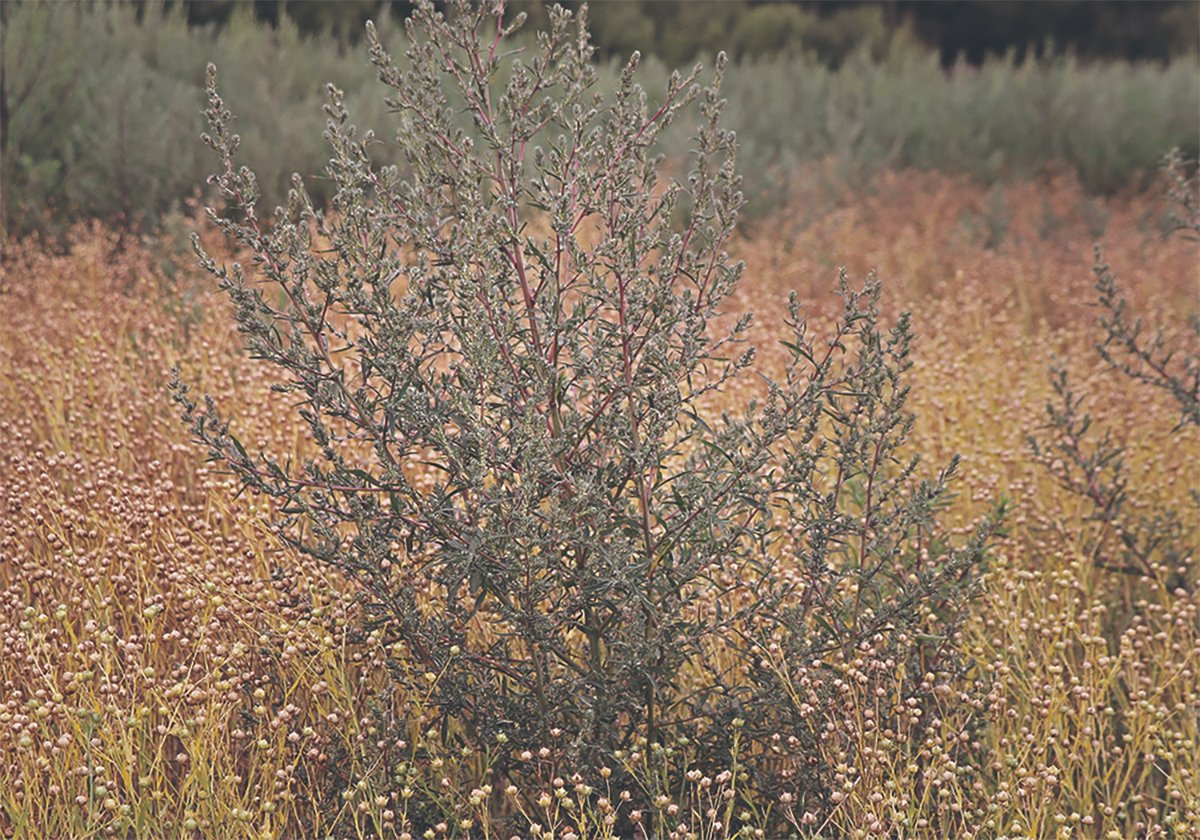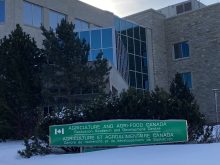The persistent drought in a large area of Alberta and parts of
Saskatchewan has some farmers wondering where to turn.
Pasture and winter feed supplies for livestock are in short supply and
many grain producers are wondering whether their crops will be worth
harvesting.
There are ways to deal with feed shortages, but they require
flexibility and co-operation.
It is likely, for example, that municipal governments will view the
grazing of ditches as a viable and necessary option to offset the
Read Also

Kochia has become a significant problem for Prairie farmers
As you travel through southern Saskatchewan and Alberta, particularly in areas challenged by dry growing conditions, the magnitude of the kochia problem is easy to see.
effects of drought.
Roads could be blocked off or electric fencing put in place to allow
grazing along roadsides.
The volume of brome forage or sweet clover along a one or two-kilometre
stretch of road could add valuable weeks to the grazing season.
Before pursuing this option, scour the ditches for garbage,
particularly old pieces of wire, nails and other bits of scrap metal.
Hardware disease is a concern.
Also watch for old, broken batteries. Lead poisoning is a possibility.
Check for your liability in case a problem occurs.
In many areas, cereal crops look bad. In some cases, grain producers
are co-operating with livestock producers and allowing fields to be
fenced and grazed or harvested either as silage or greenfeed.
In heat-stressed crops, particularly those that were heavily
fertilized, nitrate poisoning is a possibility.
Before grazing or harvesting, samples should be sent to a lab for
analysis. There is potential for danger when levels of nitrate nitrogen
exceed 0.35 percent or when potassium nitrate levels exceed 0.5
percent. Keep in mind it may be possible to mix feed that is high in
nitrates.
Consider canola
Canola silage can also be added to rations. Some farmers have fed up to
one third canola silage with good results.
If possible, turn livestock in a field after it has been harvested.
Cattle will graze the stubble and manure will fertilize the land.
Again, watch for nitrate levels to ensure the feed is safe.
In some locations, large tracts of low-lying land are not being farmed.
Grazing sloughs and willow thickets can extend the grazing season but
the health of sensitive areas should be monitored to ensure against
long-term damage.
Swamp grasses are not as palatable as other forages and they usually
aren’t as nutritionally sound, but they will suffice as a stopgap
measure.
Make sure mineral and salt consumption is maintained and watch for
water hemlock, an extremely poisonous weed that grows in swampy areas.
The root bulb of water hemlocks is the extremely toxic part.
Feed efficiency must be maximized, and this year like no other,
rumensin should be fed to maximize feed resources. Talk to your
veterinarian, nutritionist or cow-calf specialist to find out more
about rumensin if you haven’t fed it before.
This is definitely the year for a thorough cull. Remove all animals
that have bad udders, wild dispositions and poor milk production. Those
prone to prolapses should also be culled.
Keep the best productive cows. If you have never done pregnancy
checking, this is the year to start. It will eliminate open or late
cows, getting rid of unproductive animals that tax
feed resources.
Checking should be done shortly after the bulls are pulled.
Late cows will show up open. Producers can stretch their feed supplies
by feeding healthy pregnant cows only.
The same applies to bulls. Cull heavily and deeply. There will be lots
of top-quality yearling bulls available from purebred breeders.
Bedding will also be in short supply this year. Keeping the cows at a
condition score of around three minimizes the amount of bedding
necessary through the winter. Snow can be a good insulator – let’s hope
we get lots of it this winter.
Other options are wood chips if available. Dried peat moss, although
dusty, is an excellent bedding product.
And finally, talk to your neighbours. By discussing problems and coming
up with solutions, we can get through these trying times.
Roy Lewis is a veterinarian practising in Westlock, Alta.
















